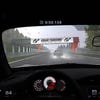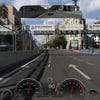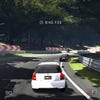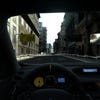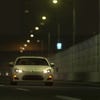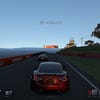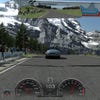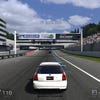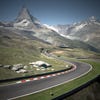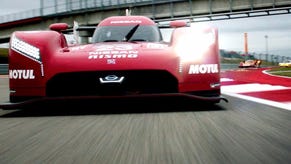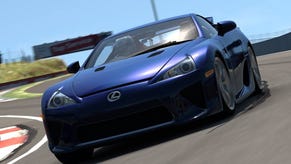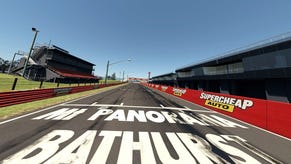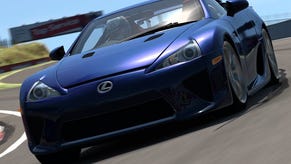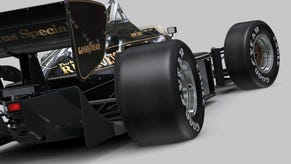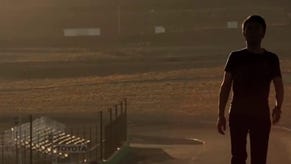Digital Foundry vs. Gran Turismo 6
Polyphony Digital's PS3 swansong.
Last year marked the 15th anniversary of the Gran Turismo franchise and the arrival of GT6, Polyphony Digital's final outing on the PlayStation 3. With the veteran hardware now on its seventh year, it's fair to say they've had a fair crack at pushing the platform to its limits. GT6 arrived with a wealth of new content along with numerous changes and improvements to the underlying technology - we're seeing state-of-the-art features that aren't even present in the next-gen Forza Motorsport 5.
Gran Turismo has always resembled a bit of a work-in-progress - particularly when looking at its PS3 iterations. By the time GT5 finally reached store shelves in winter 2010 we found it to be an incredibly ambitious title that also fell short in a few key areas. Its large selection of vehicles were marred by the inclusion of warmed over PS2-era car models, while its menu system made getting into a race a challenge in its own right.
From a technology standpoint, Polyphony Digital has always aimed high with support for 1080p resolutions and high frame-rates, but fell short of their 60 frames per second objective as a result. 25 patches later, Gran Turismo 5 still remains perhaps the most ambitious title in the series' history, but there was always a sense that the game never fully delivered on the vision Kazunori Yamauchi set out to achieve on PlayStation 3. GT6 represents his final attempt to sort out this unfinished business.
The cumulative years of work leading up to the release of GT6 bring an impressive number of improvements to the table, but perhaps one of the most noticeable changes makes itself known within the first few minutes: the user interface. This was one of the weakest elements of Gran Turismo 5, thanks to a slow and ponderous design.
With Gran Turismo 6, navigation is now a faster and more fluid affair with nearly every option laid out bare right from the main menu. Failing to select the right car for an event, for instance, no longer requires countless button presses and loading screens. In a game such as Gran Turismo, menu navigation is critical when it comes to really digging into the available content and, in that sense, GT6 represents the finest UI in the series.
"Resolution has increased to 1440x1080 in GT6 but superior multi-sampling anti-aliasing is swapped out for a post-process alternative that is lacking in comparison."
Interface issues were further complicated in GT5 by a lengthy installation process which could display "installing" messages hours after you completed the optional "full" installation. This time out, the installation is handled entirely on an as-needed basis in the form of a data cache. It works like this: the first time any new asset is required, the game pulls the data from disc and stores it in the cache file. The option was actually available in GT5 in some form, but the implementation in GT6 feels more polished and only ever impacts the initial loading of a race rather than bogging down the interface as a whole. In fact, the whole process is somewhat reminiscent of the standard installation process utilised on PlayStation 4, managing to feel similarly streamlined.
We decided to run some tests with a freshly installed copy of the game in order to determine how loading speed is impacted by installation. We started with a six-car race on Silverstone and were left with a lengthy 1:13 loading time before the race could begin. Returning to the main menu and starting the same race a second time, however, yielded a drop to 34 seconds. We saw even better results with Leguna Seca: once a healthy selection of car and track data has been loaded to the hard drive we're looking at 25-second loading times before driving.
As with the most updated version of Gran Turismo 5, however, these still lengthy loading times are somewhat masked by a pre-race setup menu that allows you to tweak any number of variables before the race is fully loaded. Rarely is the player left staring at a loading screen. Compared to the original release of GT5 with its barrage of loading screens, GT6 simply makes entering an event a much more active experience.
"Comparisons with Gran Turismo 5 reveal a sequel that has added some genuinely impressive new effects - but there is a drop in frame-rate that impacts the fluidity of the driving experience."
Alternative analysis: Gran Turismo 6 vs. Gran Turismo 5 720p performance tests
Interestingly, some of the more ambitious and experimental features that were introduced for GT5 have gone missing in GT6. 3D support is completely absent this time out while the attempt at head tracking via the PlayStation Eye has also been removed. It's remotely possible that 3D may someday return in a patch, but the performance issues GT5 faced when using this mode suggest that it's probably not a huge loss. The same could be said of the PS Eye support, which was highly unreliable.
The driving experience
Once behind the wheel we finally get a closer look at Polyphony Digital's latest rendering technology. As with the GT Academy demo released this past summer, GT6 operates using a 1440x1080 framebuffer; a 12.5 per cent gain over the 1280x1080 employed in Gran Turismo 5 and now matching the resolution used by the original Gran Turismo HD release - a single circuit demo released in tandem with the PlayStation 3. We also see the elimination of 2x quincunx anti-aliasing (QAA) in favour of a morphological (MLAA) solution, strongly reminiscent of the tech devised by Sony's Advanced Technology Group and integrated into a host of first and third-party PS3 games.
This frees up memory and resources on the RSX, allowing for a higher resolution, but the end results are mixed. While the increased clarity and lack of blur associated with multi-sampling definitely help produce a sharper overall image, the aliasing along finer edges such as trees and fences is increased, resulting in more noticeable shimmering. The higher resolution does at least help clean up some of the more glaring artefacts associated with the use of alpha to coverage on transparencies, however.
As with GT5, an optional, faster 1280x720 mode can be engaged by selecting this as the maximum supported resolution from the PlayStation 3's XMB. MLAA persists in this mode as well, however, failing to offer the same level of clarity afforded by the previously used 4x MSAA in Gran Turismo 5's 720p mode. In either mode, texture filtering is used well enough to avoid losing significant texture detail at steep angles - unlike the competing Forza 5.
"As it stands, performance seems to hinge on the use of four elements: dynamic lighting, the amount of cars on-screen, utilisation of the cockpit view, and weather effects."
When we tested the Academy Demo we were concerned with the lacklustre performance when operating in 1080p, but as it was just a demo, there was still hope that things would improve by launch. After all, the removal of more demanding MSAA should theoretically free up enough resources to allow for faster performance. Unfortunately, the 60fps target is regularly missed, resulting in screen-tear and image judder far more often than we'd like.
Tearing remains an issue with GT6 but manifests itself somewhat differently than in GT5, necessitating a rewrite of the tear detection algorithms in our performance tools. The overall effect is less distracting than in GT5 but still far from optimal - the visual impact of the tearing is not as noticeable to the human eye, but there's a definite "wobble" in the presentation when frame-rate dips below 60fps.
As it stands, performance seems to hinge on the use of four elements: dynamic lighting, the amount of cars on-screen, utilisation of the cockpit view, and weather effects. GT6 includes an updated real-time lighting solution designed to allow for realistic time of day changes. While this feature was already present in Gran Turismo 5 to a limited degree, GT6 sees this extended across a wider variety of circuits.
This is clearly a very demanding feature, however, resulting in performance issues with any track utilising the updated lighting model. Despite this, the end results can be quite stunning, and definitely contribute an improved sense of realism and beauty. While GT6 continues to support up to 16 vehicles in a race, the game reserves higher vehicle counts for the latter stages of the career mode. In stark contrast to GT5's arcade mode, the amount of cars in any given race is noticeably pared back in the sequel - a decision that appears to have been made for performance reasons. Only further into the career mode does the full roster of 16 vehicles appear.


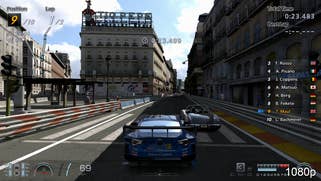
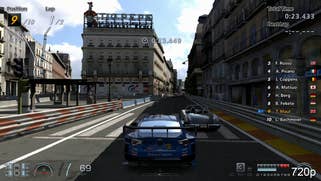


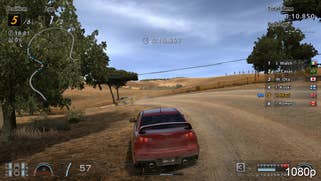
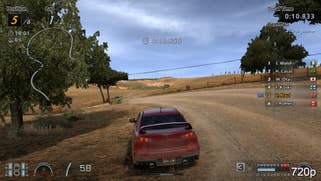
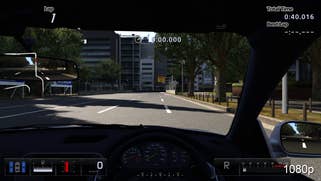
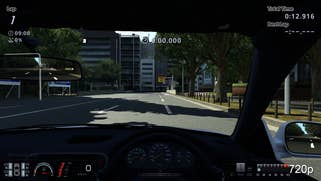
The cockpit and dynamic weather, also present in GT5, continue to negatively impact the engine's ability to reach its 60fps objective. When all of these elements are combined we encountered frame-rates that can reach the low 40s in 1080p mode. Interestingly, despite these performance issues, Polyphony Digital insists on updating all reflections and mirrors at the same rate as the game itself. Games such as Forza 5 actually decouple these elements and display them at a variable frame-rate - no doubt in order to help maintain a solid frame-rate elsewhere. It seems to us that perhaps the no-compromise attitude in regards to certain features could actually be doing more harm than good in certain cases.
There is a workaround to these performance issues, however. As with GT5, engaging the 720p mode manages to solve most of the more severe frame-rate problems. Tearing and slowdown still occur using this mode, but the game manages to hit the intended 60fps much more consistently. Image quality definitely takes a hit - especially in terms of the MLAA, which has fewer pixels to work with - but the performance improvement is worth the sacrifice.
Aiming for 1080p was an ambitious move from the beginning, but we can't help but feel that restricting itself to 720p may have allowed Polyphony to push still further with its visuals while at the same time reaching the more stable performance level enjoyed by the PS2 iterations of the game.
"Adaptive tessellation has been added to GT6, but it's a struggle to see where it is utilised. In-game we see LOD 'pop' as lower poly cars are swapped in with higher detail versions as we move to overtake."
In either mode, Polyphony has at least addressed some of the more egregious rendering flaws that marred the previous game. In the cockpit, shadows now appear much softer, without noticeable pixellation or distortion, while the obnoxious grain filter that bathed darker areas in GT5 has been eliminated too. On the road, shadows have received some changes as well: the resolution still appears rather low, but a change in the way they are filtered allows them to appear smoother around the edges. Stopping to examine shadows reveals these limitations, but while driving, artefacts are far less noticeable than in Gran Turismo 5. We also see an increased precision in alpha textures, such as smoke, reducing some of the glaring blockiness commonly encountered in GT5's transparencies.
It has also been suggested that GT6 employs a form of adaptive tessellation that dynamically adjusts the polygon mesh based on camera proximity. With the limited resolution of the game and the speed at which everything moves, it's difficult to say whether this pursuit was worthwhile in the end. Perhaps it is limited to the 30fps replays because we still see LOD popping on the car models in-game - the process where lower detail models are swapped in for higher poly versions as you move closer to them.
Some of the most impressive visual improvements show up only in replays: the dramatic blur effects and bokeh depth of field previously reserved for photo mode now appear - in a less precise form - in replays. Motion blur now operates with more samples removing the artifacts that were previously visible in GT5. The low resolution depth of field effect is also replaced with a much higher quality bokeh version that is especially impressive during night-time racing. While the quality still isn't on par with the high precision effects found in photo mode, they provide a convincing approximation. When GT5 dropped to 30fps for replays instead of the usual 60fps present in the PS2 installments, there was a sense that something was lost, but GT6 provides the level of spectacle we'd want for trading on resolution.

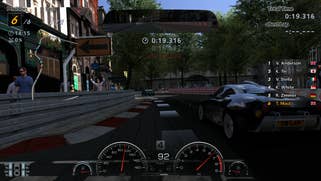
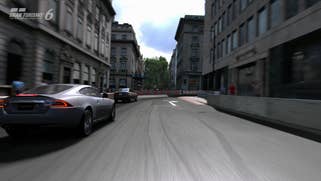

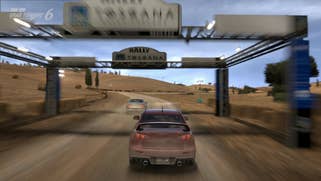

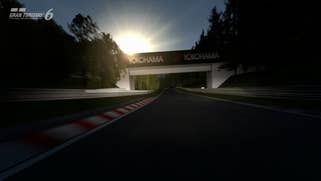

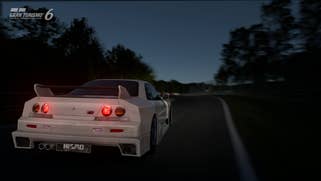

The legacy
Each generation of PlayStation has brought us two mainline Gran Turismo releases, with the second release offering a more refined and feature-rich package than the original vision. GT6 follows this tradition as a more complete, polished take on Gran Turismo 5. Of course, it's also true that each console sequel has suffered a bit under the weight of its ambitions, particularly in the area of performance, with the second-gen products usually operating with lower frame-rates in some areas than their predecessors.
The PS3 spent more time on the shelves as Sony's primary console than any prior PlayStation, yet GT6 took seven years to arrive. It's an interesting point to consider as it helps highlight just how much more time the creation of these games requires with each generational shift. When Polyphony started working on Gran Turismo 6, we can imagine that the original plan did not include the use of models created for GT4, and there's a sense that GT6's assets were created very much with the future in mind: between the incredibly detailed premium car models, the advanced lighting solution, and the beautiful post-processing utilised in replays, it's fair to say that a boost to image quality and performance alone could make for a convincingly high-end PS4 title. Many of these details were necessarily curtailed by limitations of the PlayStation 3 hardware, but the systems that have been created here seem to be a great fit for its successor.
In some ways, the changes made to the replay mode could hint at what we might see in the future. Until the arrival of patch 1.03, in-game camera replays made use of the same high quality post-processing found in the more dramatic camera views allowing us to see just how gameplay might look with these effects engaged. The high quality motion blur helps conceal some of the more noticeable flaws in the environment while placing more of an emphasis on lighting. It has been rumored that we might see the next instalment in the franchise on PS4 sooner rather than later, so we hopefully won't have to wait too long to see what they have planned.
Of course, while we're excited to see where Polyphony Digital takes the series next, sometimes looking back can give us some insight into the future. The developer has been with PlayStation since the beginning and has dramatically transformed the Gran Turismo experience across six games and three generations of Sony hardware. With 15 years under the series' belt, we thought it would be interesting to compare instances of Gran Turismo as it has appeared across generations. Despite its limitations, it's clear that GT6 has come a long way from its origins and represents a leap in every respect, but there are clearly areas where the game can improve visually as move onto the PlayStation 4 generation.

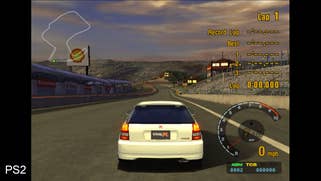
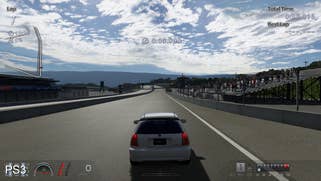
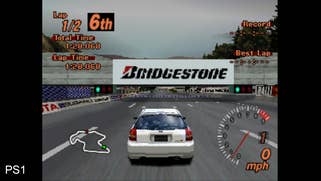
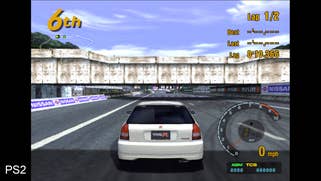
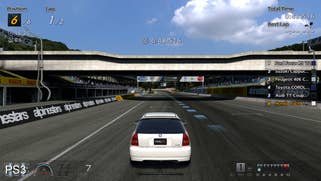
Gran Turismo 6: the Digital Foundry verdict
If Gran Turismo 6 is the final last-gen title from Polyphony Digital, it could be suggested that the developer still hasn't met its objective set forth almost a decade ago: to deliver a 60 frames-per-second racing simulation at 1080p on PlayStation 3. In fact, generally speaking, performance remains smoother in both PS2 and PSP versions of the game. We still have elements in the game remaining from the PS2 generation and the gold standard 60fps update clearly hasn't been met with the consistency we would have liked. While the resolution boost is welcome, the move to MLAA from multi-sampling feels like a retrograde step (especially in 720p mode) that doesn't particularly suit the style of the game.
When GT4 was released on PlayStation 2 it felt like something close to a complete, finished product from end to end: there was the sense that everything the team set out to accomplish - bar online racing - had been achieved. With Gran Turismo 6, we simply don't get that same feeling - the engine created for Gran Turismo on PlayStation 3 has never quite fully delivered and Polyphony's ambitions were seemingly too high to be delivered on last-gen tech. The frame-rate dips here are just too jarring at times, impacting the interface between player and game, introducing too much inconsistency into the way the cars handle from one race to the next.
Gran Turismo 6 certainly suggests that Polyphony Digital has learned some valuable lessons in transitioning across generations this time out - creating assets at a quality higher than could be fully appreciated on PlayStation 3 certainly makes a strong case for this. The inclusion of features such as adaptive tessellation, which could become genuinely practical on PS4, only serves to further cement this position. By further refining the lighting, shadows, and track detail while increasing resolution and performance levels, we could be looking at a proper PlayStation 4 sequel. Other enhancements spring readily to mind: real-time lighting as standard on all tracks, improved weather conditions, a revamped damage model, a genuine revolution in the racing AI model and fewer compromises on background scenery all spring readily to mind.
Gran Turismo 6 still delivers the best GT experience to date with more content, features, and details than any instalment before it. There are still weak spots, including somewhat spotty AI and less than remarkable engine sound reproduction (we can't help but think that the RAM requirement alone rules out the mooted audio patch, but let's hope that this is coming) - but the driving model is refined to near-perfection, held back only by the inconsistent performance. Despite falling short of the original goals, the end result is still remarkable - this is the most complete Gran Turismo package released to date.




